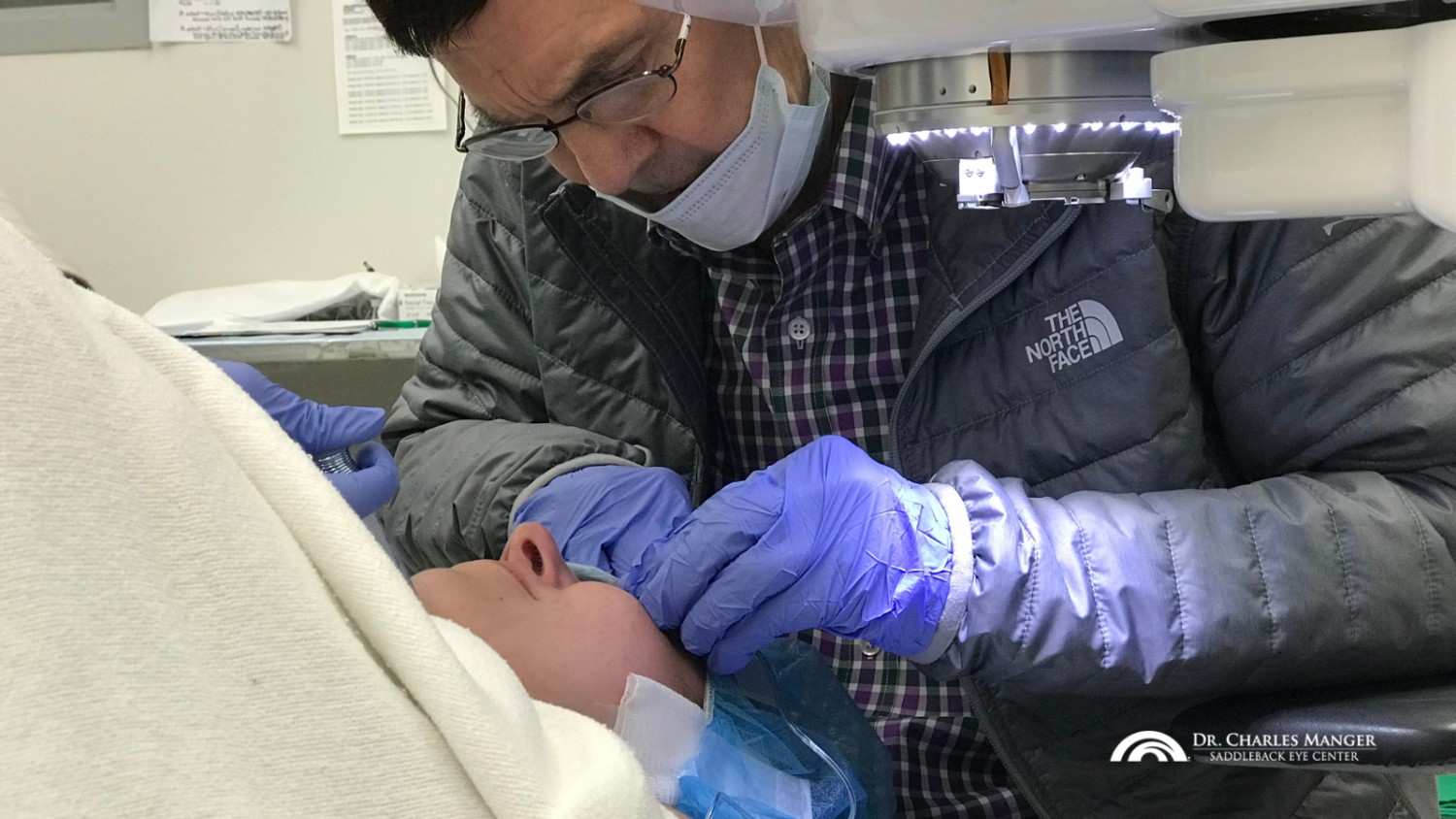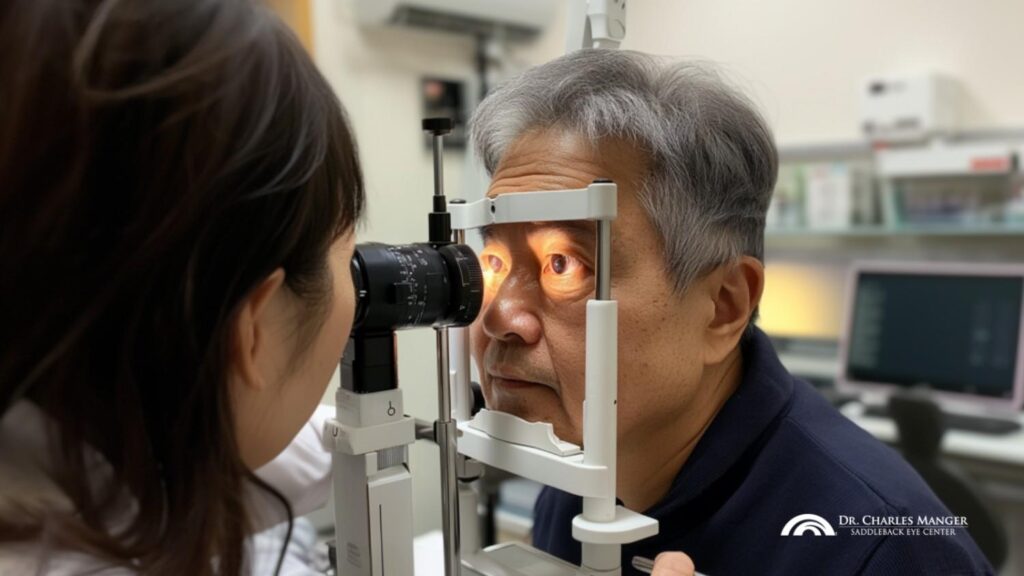LASIK eye surgery grants millions of people crystal clear vision (at least 20/40 or better vision) with a staggering success rate of 99.5%. With these numbers, it effectively revolutionizes eye care and is arguably one of the most effective surgical procedures of our time.
However, LASIK isn’t for everyone—for good reason. You see, candidacy for LASIK is determined by multiple factors to ensure the best outcomes for patients. While, theoretically, you can push through with it despite not meeting a few qualifications, a responsible eye doctor advises against it.
At Saddleback Eye Center, Dr. Manger personally conducts the comprehensive eye exams that determine your candidacy for LASIK. Today, we’ll share with you some of the essential considerations he takes into account to see if you are qualified for the procedure.
Key Qualifications for LASIK Candidates
Undergoing LASIK eye surgery will be one of your most significant health decisions. Considering its costs and benefits, it can be one of the best investments you’ll make if you and your doctor ensure you qualify.
Hence, a multitude of factors will determine whether or not you qualify. These factors broadly sum up to three main things:
- Vision stability. A stable prescription for at least one year before surgery is essential, as it tells your doctor that your eyes and vision will not change further. This stability ensures that LASIK’s effects last longer and that further correction surgery is avoided.
- Corneal thickness. LASIK involves reshaping the cornea to improve vision, so sufficient corneal thickness is vital. A thicker cornea allows for safer reshaping, reducing the risk of complications. A thinner cornea, on the other hand, may not have enough tissue for a successful procedure.
- Overall health. General health is another pertinent factor in LASIK candidacy. Conditions like diabetes, autoimmune disorders, or any health issue affecting wound healing could impact your LASIK recovery (more on this below). Good health ensures your body can heal properly, contributing to a smoother recovery and optimal results.
That said, you can deduce what factors might disqualify you from LASIK. Let’s dive into that in the next section.
Limitations for LASIK Candidacy
Certain limitations must be considered for LASIK’s success. As we established in the last section, these are specific reasons that fall under the general factors we previously discussed.
If you experience or have been diagnosed with any of these conditions, you may need to discuss other options for vision enhancement with your doctor:
1. High Prescriptions
Patients with high prescriptions may not be ideal candidates for LASIK, as extreme levels of nearsightedness or farsightedness can make the procedure less effective or risky.
Regarding specific guidelines, high prescriptions typically refer to cases of extreme myopia (nearsightedness) above -10.00 diopters or hyperopia (farsightedness) above +4.00 to +6.00 diopters. These parameters are often considered borderline for LASIK, as the level of correction required can exceed the safe range for tissue removal and result in less predictable outcomes.
The primary reason is that high prescriptions require more significant cornea reshaping to achieve clear vision. This means more corneal tissue must be removed. For those with very high prescriptions, there may not be enough corneal thickness to safely perform the reshaping needed, which can increase the risk of complications.
Patients with high prescriptions may still have other options for vision correction, and a thorough evaluation by a LASIK specialist can determine the safest and most effective approach for their specific needs.
2. Irregular Corneas (Keratoconus)
Keratoconus is a condition where the cornea, which is usually round, thins out and begins to bulge into a cone-like shape. This irregular shape can cause blurred or distorted vision and makes it difficult to correct vision with standard glasses or contacts.
LASIK is generally not recommended if you have keratoconus because the procedure requires a stable, regularly shaped cornea to achieve accurate reshaping and optimal vision correction. Since keratoconus weakens the cornea and causes it to thin and bulge, removing additional tissue with LASIK can further weaken the structure. This could worsen the bulging effect or lead to ectasia, where the cornea progressively thins and distorts after surgery, causing further vision problems.
For patients with keratoconus, alternative treatments like specialized contact lenses or procedures like corneal cross-linking may be recommended to help strengthen the cornea and improve vision safely. Consulting with an eye specialist is the best way to determine the safest path for your vision correction needs if you have an irregular cornea.
3. Pregnancy and Menopause
Hormonal shifts during pregnancy and menopause can temporarily change your vision, so these phases aren’t the best time to consider LASIK. For instance, pregnancy can bring shifts in hormone levels, metabolism, and blood flow, all of which can subtly alter the shape or thickness of your cornea. These changes are usually temporary, so getting LASIK during this time might lead to less stable results since your vision could continue to change as your hormones balance out.
That’s why doctors generally recommend that pregnant or breastfeeding moms wait about six months after childbirth or finishing breastfeeding before moving forward with LASIK. This allows time for hormone levels to normalize, making your vision more predictable for the procedure.
Similarly, menopause can bring its own set of vision fluctuations due to hormone changes. For women going through menopause, it’s a good idea to ensure your vision has stayed stable for at least a year before LASIK. This approach helps ensure the results are as lasting and effective as possible. Overall, waiting for stability is key to getting the best results from LASIK.
4. Medication Interactions
Certain medications can impact LASIK results or make the recovery process more challenging, so reviewing any prescriptions with your LASIK surgeon is essential. Some medicines can affect eye moisture, healing, or even the accuracy of the procedure. For example:
- Steroids can slow down healing, which could lead to a longer recovery time after LASIK.
- Antihistamines often reduce tear production, leading to dryness that can worsen after surgery.
- Isotretinoin (Accutane) for acne can also cause significant dry eyes, which may interfere with corneal health during the procedure.
- Hormone replacement therapy may affect the stability of your vision, making it harder to achieve lasting LASIK results.
If a medication is a temporary part of your treatment plan, your doctor may suggest waiting until you’ve completed it before moving forward with LASIK. This thoughtful timing can help optimize your results and provide a smooth healing experience.
5. Severe Dry Eye Syndrome
Patients with severe dry eye syndrome may find their condition exacerbated by LASIK, as the surgery can impact tear production.
Preoperative treatment to improve tear quality and quantity is essential for patients with dry eyes. Specialized eye drops, punctal plugs, or other therapies can optimize eye health before the surgery, ensuring a safer and more comfortable LASIK experience.
6. Autoimmune Disorders or Uncontrolled Diabetes
These conditions can affect healing post-surgery. For example, diabetes can lead to fluctuating glucose levels, impacting vision stability, while autoimmune disorders might slow corneal healing.
For patients with these conditions, a thorough medical evaluation and stabilization of the condition are crucial before LASIK. Managing blood sugar levels in people with diabetes and ensuring autoimmune diseases are under control can significantly improve surgical outcomes and healing post-LASIK.
7. Age-related Vision Loss (Presbyopia)
Presbyopia, or age-related farsightedness, typically develops in individuals over 40. While LASIK corrects the cornea’s shape, it doesn’t prevent age-related changes within the eye, meaning presbyopia can still occur post-LASIK.
Blended monovision can be an effective solution for patients with presbyopia. This technique adjusts one eye for distance and the other for near vision, reducing dependence on reading glasses. Dr. Manger’s expertise in blended monovision allows for a customized approach, offering clear vision for both near and distant objects.
Final Thoughts: Choosing the Right LASIK Surgeon
Choosing the right LASIK surgeon is essential to achieving your vision goals. At Saddleback Eye Center, Dr. Manger combines his extensive experience with cutting-edge LASIK technology to ensure you receive the highest standard of care and lasting results.
Understanding the factors influencing LASIK candidacy is critical to a safe, effective outcome. While LASIK might not be the best option for everyone, rest assured that Dr. Manger and our team are here to help you find the vision correction solution that suits you best.
Ready to see the world more clearly? Reach out to Saddleback Eye Center today—we’re here to guide you every step of the way!





